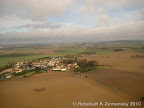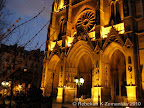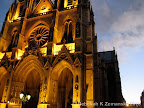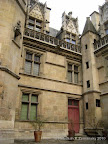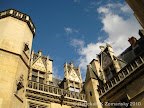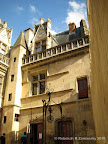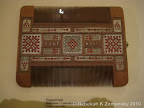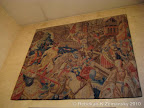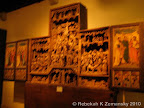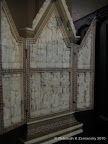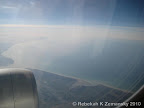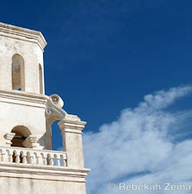Creative nonfiction, narrative journalism, long form reporting – whatever you call it, that’s what this week’s Must See Monday / Cronkite Conversation was about. As an aspiring writer myself, I’d been looking forward to this one ever since this semester’s event list came out. I didn’t know a lot about creative nonfiction, mostly just two things. I knew that it was included in KU’s new MFA program which one of my favorite professors at KU had worked hard to set up. Also, to borrow a phrase, I know creative nonfiction – and appreciate it – when I see it.
Oh, and I know that creative nonfiction’s relationship with journalism is new and growing. There’s lots of discussions about how journalism is changing – are newspapers going to survive, must journalists master multiple media formats, and will stories go mobile? But change isn’t always dramatic. Reporters who are seeing their audience respond to creative nonfiction are learning how even more subtle changes can make a big difference. The definitions of creative nonfiction are well discussed all over the web (like here, here, here, and here) so I’ll cut to the chase : great advice from great writers.
Lee Gutkind Lee Gutkind is editor of Creative Nonfiction as well as being writer-in-residence for the Consortium For Science, Policy, and Outcomes and working with The Virginia G. Piper Center for Creative Writing. Terry Greene Sterling is also writer-in-residence at ASU – her blog is here and her newest book, Illegal, will be coming out this fall.

Gutkind pointed out that with creative nonfiction, creative equals the dramatic part, and nonfiction equals the journalism and information part. “Every time you write a story, every single time you think about a story, you’re trying to draw the reader in as long as possible” – creative nonfiction is one way to do this, whether it’s personal narrative about the journalist or public narrative the journalist writes about others. Either way, the building blocks for creative nonfiction are scenes. Gutkind uses the yellow test – taking a favorite piece of writing and a yellow magic marker, then highlighting all the scenes.
“If you’re doing a serious story, 50 to 60 to 70 % should be scenes,” Gutkind said. “The way I work – I gather my information and think of the stories, and am constantly thinking of where the stories go.” He sits down and writes the scenes of the story, then looks for where the information goes and “the story determines the information you provide, the story determines the reportage – so instead of worrying about the reporting, I get the information the story needs.”
Gutkind doesn’t just work with journalists – when he’s not working on Creative Nonfiction, he’s applying creative nonfiction to other kinds of narrative like science and law through a mixture of classes and workshops. In fact, Gutkind said that in some ways it’s easier to teach scientists, historians and lawyers to start writing, since journalists are often very set in short, short formats – they must break familiar writing patterns to switch to creative nonfiction.

For Sterling, narrative journalism equals telling true stories that matter…and that people love to read, and hear, and see, and interact with. It uses the techniques of fiction to tell true stories. She points out that you can’t be a good writer if you can’t be a good reporter since you have to have the material first – Sterling describes public records as “gold.” Also, narrative journalism doesn’t come easy and “you have to train yourself – train yourself every single day.” Sterling described narrative journalists as risk takers who “should learn something new very single day” and “see stories everywhere.”
Sterling organizes her work as she goes along by keeping running lists on the whole project and each section and going over her notes regularly. She said that her stories evolve during the reporting and then the framework comes together. Finally, it’s important to tell the reader how she got the story – it’s also tricky to work citations in to a narrative form. Writers like Sterling and Lane DeGregory, who don’t want to clutter the narrative put the attribution at the end.
During the questions and answers, two other attending journalists – New Times reporter Robrt Pela and freelance award winner Valeria Fernández – also answered questions about they organize their work. Fernández described her work as making a good meal – she gathers the ingredients, starts cooking, and gets more salt as needed. She uses “check on this” markers to get the story down. Pela calls these “apocryphal markers” and uses them for follow up interviews. I really appreciated this advice, and the rest of the evening. Coming back from break can be hard, but having the first day back end with inspiration sets a strong precedent for the rest of the semester.
Like this:
Like Loading...





